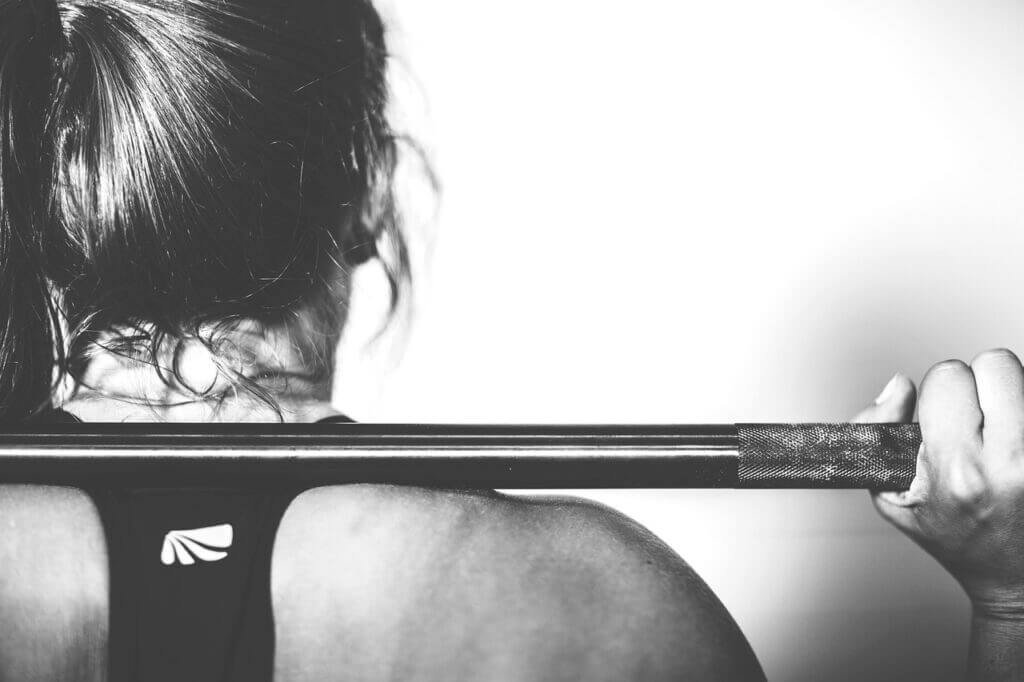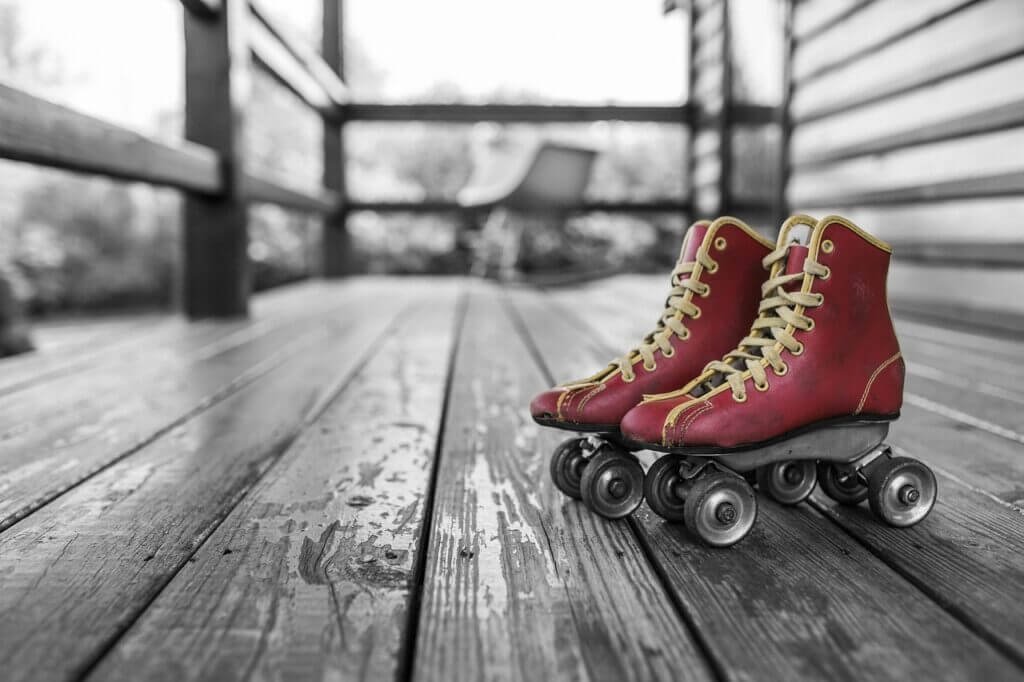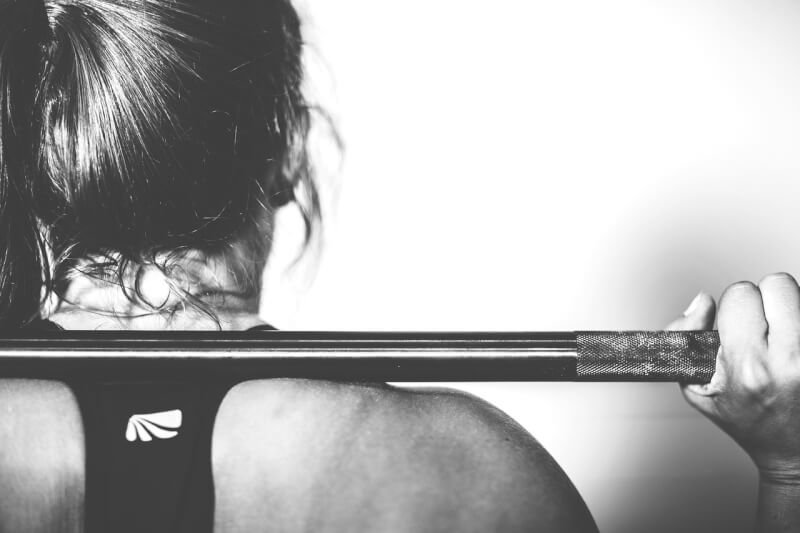When it comes to athletes, one thing is clear: their strength and conditioning play a vital role in their overall performance. Whether it’s a professional athlete or someone just starting out in their chosen sport, building strength and improving endurance are crucial for success. In this article, we will explore why strength and conditioning are essential for athletes, how they can enhance performance, prevent injuries, and ultimately help athletes reach their full potential. So grab a seat and get ready to discover the importance of strength and conditioning in the world of sports!

Improving Performance
Increasing strength and power
Strength and power are crucial elements in athletic performance. By incorporating strength and power training into your routine, you can significantly enhance your performance in various sports. Building overall strength allows you to generate more force, enabling you to jump higher, sprint faster, and throw with greater power. Power training focuses on explosive movements, such as plyometrics and Olympic lifts, which train your muscles to generate force quickly. By improving strength and power, you can excel in your chosen sport and reach new heights in terms of performance.
Enhancing speed and agility
Speed and agility are key factors that separate average athletes from the exceptional ones. By incorporating speed and agility training into your workouts, you can improve your reaction time, acceleration, and change of direction. Speed training involves various exercises such as sprints, ladder drills, and cone drills, while agility training focuses on quickness, balance, and coordination. These training methods improve your ability to swiftly navigate through obstacles and react to the fast-paced nature of your sport. Enhancing your speed and agility can give you a competitive edge and help you outmaneuver your opponents.
Improving endurance and stamina
Endurance and stamina are vital for athletes who participate in sports that require long-lasting effort, such as distance running or cycling. Endurance training involves activities that challenge your cardiovascular system and increase your ability to sustain physical activity for extended periods. By incorporating endurance training into your routine, you can improve your oxygen delivery and energy production, leading to increased stamina and the ability to perform at a high intensity for longer durations. Whether you’re a long-distance runner or a soccer player, improving endurance and stamina can boost your performance and help you excel in your chosen sport.
Injury Prevention
Building resilience to injuries
Injuries can be a major setback for any athlete. However, by incorporating injury prevention strategies into your training regimen, you can minimize the risk of getting injured. Building resilience to injuries involves strengthening the muscles and structures that support your joints and bones, such as ligaments and tendons. By engaging in exercises that target these areas, you can improve their strength and stability, reducing the chances of sprains, strains, or tears. Additionally, incorporating proper warm-up and cool-down routines, along with stretching exercises, can help prevent injuries by improving flexibility and promoting muscle balance.
Correcting muscular imbalances
Muscular imbalances occur when certain muscle groups are stronger or weaker than others. These imbalances can lead to poor biomechanics, which increase the risk of injuries. By identifying and correcting muscular imbalances through targeted exercises, you can improve your body’s overall alignment and coordination. Strengthening weaker muscles and stretching overactive muscles can help restore balance and prevent overuse injuries. Working with a strength and conditioning coach or physical therapist can help you identify specific areas of weakness and develop a balanced training program to address these imbalances.
Enhancing joint stability
Maintaining joint stability is crucial for injury prevention and optimal performance. Strengthening the muscles surrounding your joints, such as the shoulders, hips, and knees, can help stabilize these joints and reduce the risk of injury. Exercises that target these muscle groups, such as resistance training and stability exercises, can improve joint stability by increasing muscle strength and control. Additionally, incorporating balance and proprioception exercises into your routine helps improve joint awareness and control, further enhancing stability. By focusing on joint stability, you can protect yourself from injuries and perform at your best.

Enhancing Recovery
Reducing muscle soreness and fatigue
After intense physical activity, it is common to experience muscle soreness and fatigue. However, by incorporating proper recovery techniques into your routine, you can minimize these effects and enhance your overall performance. Techniques such as foam rolling, stretching, and low-intensity exercise can help alleviate muscle soreness and promote a faster recovery. Additionally, using ice or heat therapy, taking contrast showers, and using compression garments can aid in reducing inflammation and promoting blood flow to the muscles, leading to quick recovery and reduced fatigue.
Improving circulation and oxygen delivery
Optimizing circulation and oxygen delivery is essential for muscle recovery and overall athletic performance. By incorporating activities that improve blood flow and oxygenation, such as low-intensity cardio exercises, stretching, and deep breathing exercises, you can enhance your body’s ability to remove metabolic waste and deliver essential nutrients to your muscles. This aids in quicker recovery, reduces muscle soreness, and allows for improved performance during training and competition. Prioritizing activities that improve circulation and oxygen delivery can significantly enhance your recovery process.
Optimizing nutrition and hydration
Proper nutrition and hydration play a vital role in recovery and overall athletic performance. Consuming a well-balanced diet that includes adequate protein, carbohydrates, and healthy fats provides the necessary nutrients for muscle repair and growth. Additionally, staying hydrated is crucial for maintaining optimal muscle function and preventing dehydration, which can negatively impact performance and recovery. It is essential to fuel your body properly before and after workouts, ensuring you consume enough calories and nutrients to support your athletic endeavors. Working with a nutritionist or dietitian can help you develop a personalized nutrition plan that aligns with your specific needs and goals.
Optimizing Body Composition
Building lean muscle mass
Building lean muscle mass is beneficial for athletes in various sports. Increased muscle mass not only enhances strength and power but also improves overall body composition. By incorporating resistance training exercises, such as weightlifting and bodyweight exercises, into your routine, you can stimulate muscle growth and development. Coupling these exercises with proper nutrition and recovery allows your body to build and maintain lean muscle mass. Building lean muscle mass can lead to improved athletic performance, increased metabolism, and better body composition.
Reducing body fat
Reducing body fat is another essential aspect of optimizing body composition. Excessive body fat can hinder athletic performance by causing decreased agility, increased strain on joints, and decreased overall efficiency of movement. By incorporating cardiovascular exercises, such as running or cycling, into your routine, you can effectively burn calories and reduce body fat. Combining these exercises with a calorie-controlled diet helps create a caloric deficit, leading to body fat reduction. Reducing body fat can improve your power-to-weight ratio, endurance, and overall athletic performance.
Improving body symmetry and aesthetics
Improving body symmetry and aesthetics is important for some athletes, especially those in sports that require a strong emphasis on appearance, such as bodybuilding or gymnastics. By incorporating exercises that target specific muscle groups, you can sculpt and shape your physique to achieve your desired aesthetic goals. Additionally, focusing on overall strength and conditioning helps create a balanced and symmetrical physique. When training for body symmetry and aesthetics, it is essential to maintain a healthy balance between training, nutrition, and recovery to avoid excessive strain or unhealthy practices.

Boosting Mental Toughness
Enhancing confidence and self-belief
Mental toughness is crucial for athletes to perform at their best, especially in high-pressure situations. By incorporating mental training techniques, such as visualization exercises, positive self-talk, and goal setting, you can enhance your confidence and self-belief. Visualizing successful performances and reinforcing positive affirmations can help build mental resilience and overcome self-doubt. Developing a strong sense of self-belief and confidence allows you to push through challenges and perform at your best, even in the face of adversity.
Developing discipline and commitment
Discipline and commitment are essential attributes for any athlete striving for success. By developing discipline through consistent training and adhering to a structured program, you can cultivate the necessary habits to achieve your goals. This includes showing up for workouts, following a proper nutrition plan, and prioritizing recovery. Additionally, having a strong commitment to your sport and goals allows you to stay focused and dedicated, even when faced with obstacles. Developing discipline and commitment helps you maintain consistency and progress towards your desired level of performance.
Improving focus and concentration
Maintaining focus and concentration is vital for athletes to perform at their best. By incorporating techniques such as mindfulness and meditation into your routine, you can improve your ability to stay present and focused during training and competition. Practicing deep breathing exercises and visualization techniques can help quiet the mind and improve mental clarity. Additionally, setting specific goals and breaking them down into manageable steps enhances your ability to stay focused and motivated. Improving focus and concentration allows you to perform at your peak and make quick, precise decisions in high-pressure situations.
Influencing Injury Rehabilitation
Accelerating the recovery process
Injuries can be a significant setback for athletes, but proper rehabilitation techniques can help speed up the recovery process. By working with physiotherapists or sports rehabilitation specialists, you can develop a personalized rehabilitation plan that focuses on strengthening the injured area and addressing any underlying weaknesses or imbalances. Incorporating targeted exercises, stretches, and modalities such as ultrasound or electrical stimulation can help promote tissue healing and accelerate recovery. Additionally, following a gradual return-to-sport program ensures a safe and successful transition back to full athletic participation.
Restoring strength and mobility
Injury rehabilitation aims to restore strength, mobility, and function to the injured area. By engaging in targeted strengthening exercises, range of motion exercises, and flexibility training, you can regain strength and flexibility in the injured area. Working with a knowledgeable healthcare professional ensures that the rehabilitation plan is tailored to your specific injury and needs. Restoring strength and mobility not only aids in recovery but also minimizes the risk of future injuries by ensuring the injured area is strong and fully functional.
Preventing re-injury
Once you have recovered from an injury, it is crucial to take steps to prevent re-injury. This involves continually incorporating exercises that target the injured area into your routine, even after rehabilitation. Strengthening the muscles surrounding the injured joint or area provides additional support and reduces the risk of re-injury. Additionally, adopting proper form and technique during training and competition helps prevent excessive strain on the previously injured area. Working with a strength and conditioning specialist or physical therapist can help you develop a comprehensive prevention plan that considers your specific injury history and sport.
Developing Sport-specific Skills
Improving technique and coordination
Mastering sport-specific skills requires a combination of proper technique and coordination. By incorporating drills and exercises that focus on skill development and refinement, you can enhance your ability to perform specific movements required in your sport. Practicing these skills in a controlled environment allows you to establish proper technique and biomechanics, which can translate to improved performance during competition. Additionally, incorporating drills that target coordination and motor skills helps develop the necessary muscle memory and neural pathways required for optimal execution of sport-specific movements.
Enhancing agility and balance
Agility and balance are crucial components of many sports. By incorporating exercises that challenge these abilities, such as ladder drills, cone drills, and single-leg exercises, you can improve your agility and balance. These exercises require quick movement and rapid change of direction, enhancing your ability to react and move fluidly during competition. Improving agility and balance not only enhances your performance but also reduces the risk of falls and injuries during athletic endeavors.
Fine-tuning speed and accuracy
Speed and accuracy are vital in sports that require quick reactions and precise movements. By incorporating exercises that focus on speed and accuracy, such as reaction drills, target practice, or interval training, you can fine-tune these skills. Speed training involves high-intensity activities that challenge your cardiovascular system and train your muscles to fire rapidly. Accuracy training involves practicing sport-specific movements and techniques with precision and control. By fine-tuning your speed and accuracy, you can elevate your performance and excel in your chosen sport.
Promoting Longevity and Career Durability
Maintaining overall physical health
Maintaining overall physical health is essential for athletes to have a long and successful career. This includes engaging in regular exercise, eating a balanced diet, and prioritizing rest and recovery. Incorporating a variety of exercises that target different muscle groups, cardiovascular health, and flexibility ensures a well-rounded approach to physical fitness. Additionally, ensuring adequate sleep, managing stress levels, and seeking regular medical check-ups can help detect and address any underlying health issues. By maintaining overall physical health, you can prolong your athletic career and continue to perform at a high level for years to come.
Delaying age-related decline
As athletes age, they may experience a natural decline in physical abilities. However, by incorporating appropriate training strategies and lifestyle habits, you can delay age-related decline and maintain optimal performance. This includes engaging in exercises that target muscle strength, flexibility, and cardiovascular fitness. Additionally, adopting healthy habits such as a balanced diet, regular sleep patterns, and stress management helps support overall health and vitality. Working with a knowledgeable coach or trainer who understands the aging process can help you develop a program that addresses your specific needs and goals.
Extending athletic career lifespan
By implementing strategies that promote longevity and career durability, athletes can extend their athletic career lifespan. This includes incorporating injury prevention techniques, focusing on proper recovery and rehabilitation, and maintaining overall physical health. Additionally, having a comprehensive understanding of your body’s needs, such as appropriate nutrition, adequate rest, and specific training adaptations for your sport, can help you train smarter and avoid burnout or excessive strain. Utilizing a periodized training program that includes cycles of intense training and active rest helps optimize performance and prevent overuse injuries. By prioritizing strategies that extend your athletic career, you can continue to compete at a high level for an extended period and achieve long-term success.
Building Team Cohesion
Creating a shared training experience
Building team cohesion is vital for athletes who participate in team sports. By creating a shared training experience, athletes can develop a strong bond and sense of camaraderie. This can be achieved by incorporating team-building activities into training sessions, such as partner exercises or group challenges. By working together towards a common goal, athletes develop trust, communication skills, and a collective mindset, which can translate to improved performance on the field. Creating a shared training experience fosters team unity and fosters a positive team culture.
Fostering camaraderie and trust
Camaraderie and trust among teammates are essential for team success. By engaging in team-building exercises and activities outside of training, athletes can foster strong relationships and trust among teammates. This can include social events, team outings, or even team-building workshops. The bonds formed through these activities create a supportive environment where athletes feel valued, respected, and trusted by their teammates. Fostering camaraderie and trust enhances team cohesion and improves communication and collaboration during competition.
Promoting a winning mentality
Promoting a winning mentality within a team can have a significant impact on performance. By incorporating mental training techniques, such as visualization exercises and positive reinforcement, coaches can help athletes develop a winning mindset. Encouraging a competitive environment, setting challenging goals, and celebrating successes foster a mentality of excellence and perseverance. Inculcating a mindset that embraces hard work, resilience, and a positive attitude creates a team culture that strives for success. Promoting a winning mentality not only enhances team performance but also strengthens the bond among teammates, fostering an environment where everyone thrives.
Enhancing Tactical Decision-making
Improving cognitive function and decision-making under pressure
Critical thinking and decision-making skills are essential for athletes, especially in fast-paced and high-pressure situations. By engaging in cognitive training exercises, athletes can improve their ability to process information quickly and make accurate decisions. This includes exercises that challenge reaction time, problem-solving, and situational awareness. Additionally, mentally stimulating activities such as puzzles, strategy games, and visualizations can enhance cognitive function and decision-making abilities. Improving cognitive function and decision-making under pressure allows athletes to make swift and accurate choices, giving them a competitive advantage in their sport.
Enhancing situational awareness
Situational awareness involves being aware of your surroundings, teammates, and opponents during competition. By incorporating exercises that enhance situational awareness, such as small-sided games or simulated match scenarios, athletes can improve their ability to anticipate and react to changing situations. These exercises challenge athletes to assess their surroundings and make quick decisions based on the information available to them. Additionally, mental visualization techniques that involve imagining various scenarios and outcomes can help athletes develop a heightened sense of situational awareness. Enhancing situational awareness improves an athlete’s ability to make informed decisions and adapt to changing circumstances during competition.
Developing game intelligence
Game intelligence refers to an athlete’s understanding and knowledge of their sport, including tactics, strategies, and game scenarios. By studying and analyzing past performances, watching game footage, and engaging in tactical training sessions, athletes can develop their game intelligence. This involves understanding team dynamics, recognizing patterns, and anticipating opponent movements. Additionally, working closely with coaches and teammates to develop and refine game plans further enhances game intelligence. Developing game intelligence allows athletes to make informed decisions, exploit weaknesses in opponents’ strategies, and maximize their performance during competition.
By prioritizing the different aspects of strength and conditioning discussed above, athletes can enhance their performance, reduce the risk of injuries, and optimize their overall athletic potential. Whether you are a professional athlete, a weekend warrior, or a recreational sports enthusiast, incorporating these principles into your training regimen can make a significant difference in your athletic journey. Remember to consult with professionals, such as strength and conditioning coaches or physical therapists, to develop a personalized plan that aligns with your specific needs and goals. Embrace the journey of improving your physical capabilities and enjoy the rewards it brings to your athletic pursuits.


